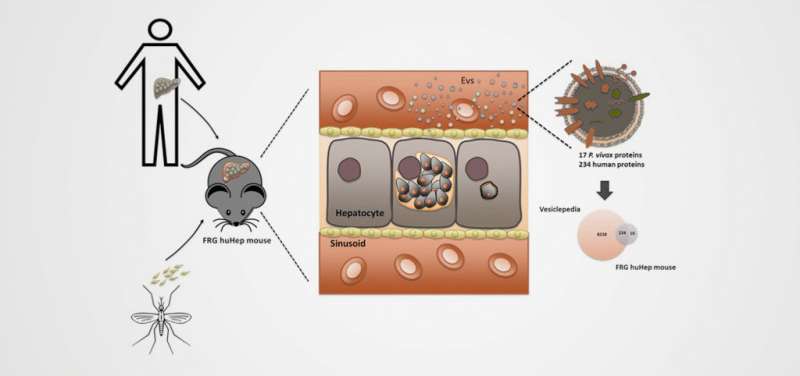In search of biomarkers to detect patients with latent 'Plasmodium vivax' infection

Proteins derived from the latent liver stage of Plasmodium vivax can be detected in small extracellular vesicles that circulate in blood, according to a study led by ISGlobal. The results pave the way for identifying patients with asymptomatic infections, an essential requirement to stop parasite transmission.
P. vivax is the predominant malaria parasite outside Africa and causes around 16 million cases per year. Although considered less lethal than malaria falciparum, malaria vivax can also cause severe disease and is associated with considerable morbidity and mortality in endemic regions. In addition, malaria vivax constitutes one of the greatest obstacles to achieving WHO's target of eliminating malaria from 35 countries by 2030. This is because the parasite can remain latent in the liver for several years after the initial infection, without causing any symptoms. Reactivation of the latent phase (called hypnozoite) causes disease relapse and allows for the possibility of transmitting the parasite to other people. Currently, there are no diagnostic tools capable of detecting asymptomatic hypnozoite carriers.
In this study, the research team led by Hernando A del Portillo (ICREA) and Carmen Fernandez-Becerra, researchers at ISGlobal and the Trias i Pujol Research Institute (IGTP), explored the possibility of using blood circulating exosomes (small vesicles secreted by different cells) to detect the presence of hypnozoites in the liver. For this, they used a new experimental model developed by their collaborators at CIDR in Seattle: 'Humanised' mice that contain human liver cells and can therefore be infected by P. vivax. From the blood of these mice, postdoc student Melisa Gualdrón-López managed to isolate human-derived exosomes that contained up to 17 different hypnozoite proteins, including a previously uncharacterized protein.
"These results are a proof-of-concept that liver-derived exosomes can help us identify biomarkers of hypnozoite infection and hopefully develop diagnostic tests for these asymptomatic patients," says del Portillo. Moreover, this experimental model will provide valuable insights into the liver infection phase.
"This work is the result of a SUMA project in collaboration with Juan Ramón González, and set the basis for a NIH-funded project that will further explore this line of research," adds del Portillo.
More information: Melisa Gualdrón-López et al, Characterization of Plasmodium vivax Proteins in Plasma-Derived Exosomes From Malaria-Infected Liver-Chimeric Humanized Mice, Frontiers in Microbiology (2018). DOI: 10.3389/fmicb.2018.01271
Provided by Barcelona Institute for Global Health




















